As Italy’s second city, Milan is first in style and authenticity. For travellers, that means a seemingly endless array of unique experiences for all the senses.
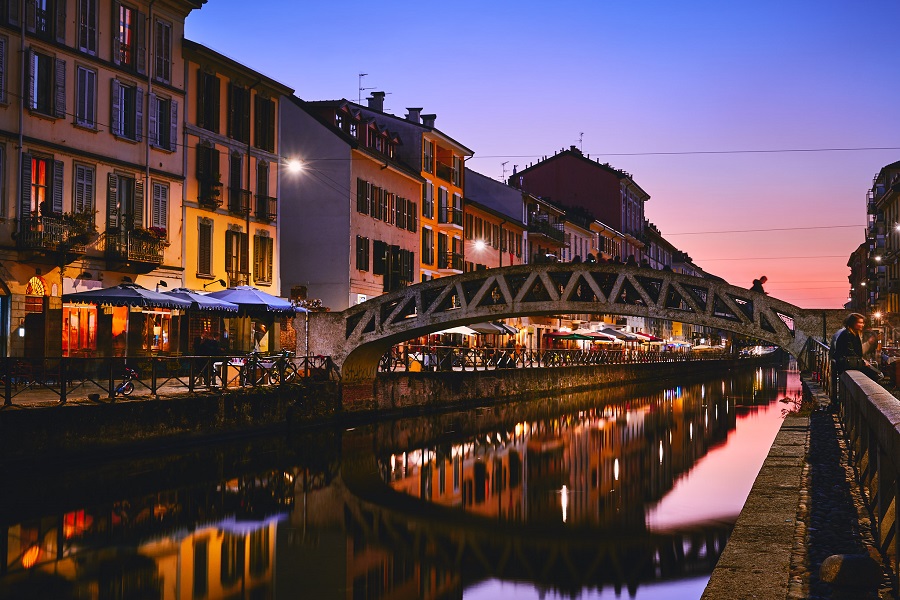
Sunset along Milan’s canals (Photo: Denseel via Flickr / CC BY 2.0)
Known for its fashion week and majestic Duomo, Milan is well versed both in history and contemporary culture. The things to do while in town range from exclusive shopping to exploring the burgeoning arts scene. As with many of the great Italian cities, this includes seeing historic works from the masters, such as Leonardo and Caravaggio.
Milan’s discreet elegance is achieved through finely balancing modern and period architecture; famous landmarks sit next to lesser-known gems hidden in plain sight. The aperitivo ritual is not to be missed when it comes to food and drinks in Milan. So too is the saffron risotto featuring on the menu of every authentic Milanese restaurant. Here is our list of 20 unique things to do in the Lombard capital.
Walk among the Duomo’s pinnacles
One of the largest cathedrals in the world, the Duomo is the undisputed symbol of Milan and is its main tourist attraction. Construction started in 1386 and continued until the 20th century, resulting in a surprisingly organic juxtaposition of styles where Gothic architecture plays the leading role. While the whole complex is dazzlingly rich in art and decoration, a walk on the rooftop terrace is certainly not to be missed. Reaching it via either stairs or lift, visitors come face to face with the forest of pinnacles topping the cathedral, watched over by the golden ‘Madonnina’ statue. The view over Milan is also well worth the ascent.
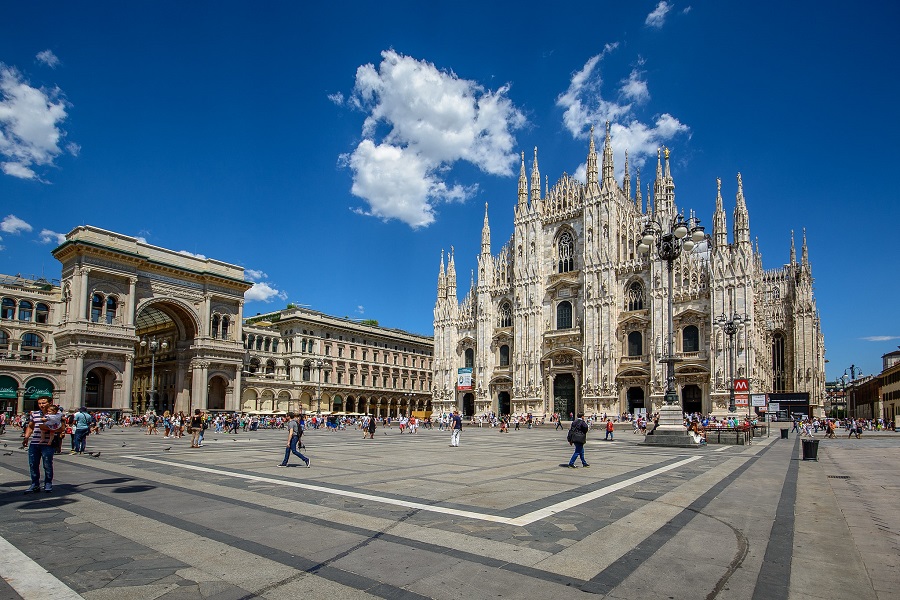
Piazza Duomo (Photo: kuhnmi via Flickr / CC BY 2.0)
Go shopping in the fashion district
Known as Quadrilatero della Moda (Quadrilateral of Fashion), the boutique district of Milan is among the world’s top destinations for high-end shopping. Four high streets delimit the main area, of which Via Montenapoleone is considered the most prestigious. Smaller elegant streets and historical landmarks are also included within this zone, making it worth a visit even when the price tags come across as a little discouraging. During the yearly fashion week, the Quadrilatero della Moda buzzes with happenings and events.
Sip an aperitivo by the Naviglio Grande
The charming settings of Milan’s canals offer the perfect backdrop to the rich aperitivo buffets the city is famous for. Just off the towpath of the Naviglio Grande, Ugo is a cocktail bar mixing a great atmosphere with delicious food, whose inventive drinks feature ingredients from all over the world. A short stroll away is La Prosciutteria, with indoor and canalside seating. Within lies a wide selection of wine accompanied by glorious platters of Tuscan delicacies. Mas is the place to go for a taste of Spain in Milan, with classic cocktails served alongside a rich buffet of Iberian specialities.
Ugo Cocktail Bar – Via Corsico, 12
La Prosciutteria, Milano Navigli – Ripa di Porta Ticinese, 53
Mas Milano – Ripa di Porta Ticinese, 11
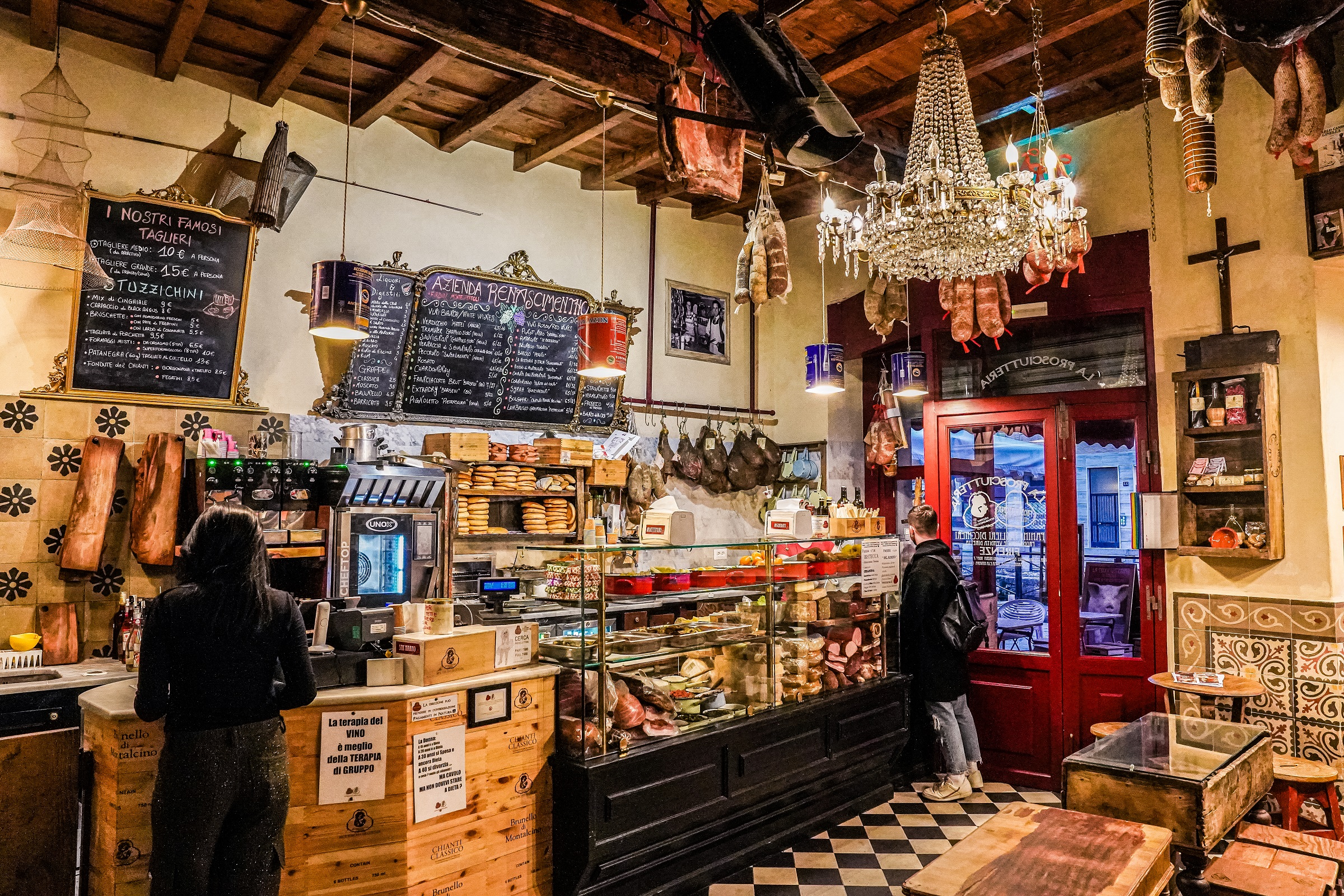
The counter of La Prosciutteria (Photo: courtesy of La Prosciutteria)
Delve into neo-Renaissance splendour at Galleria Vittorio Emanuele II
Opened in 1867 as a ‘parlour’ for Milan’s bourgeoisie, Galleria Vittorio Emanuele II is a glass-roofed shopping arcade linking Piazza Duomo to Piazza della Scala. It’s a grand example of cast-iron architecture, where neo-Renaissance taste meets the new techniques made possible by the industrial revolution. The arcade hosts exclusive and historic businesses ranging from bookshops and design clothing to refined cafes, some of which have been there since its opening.
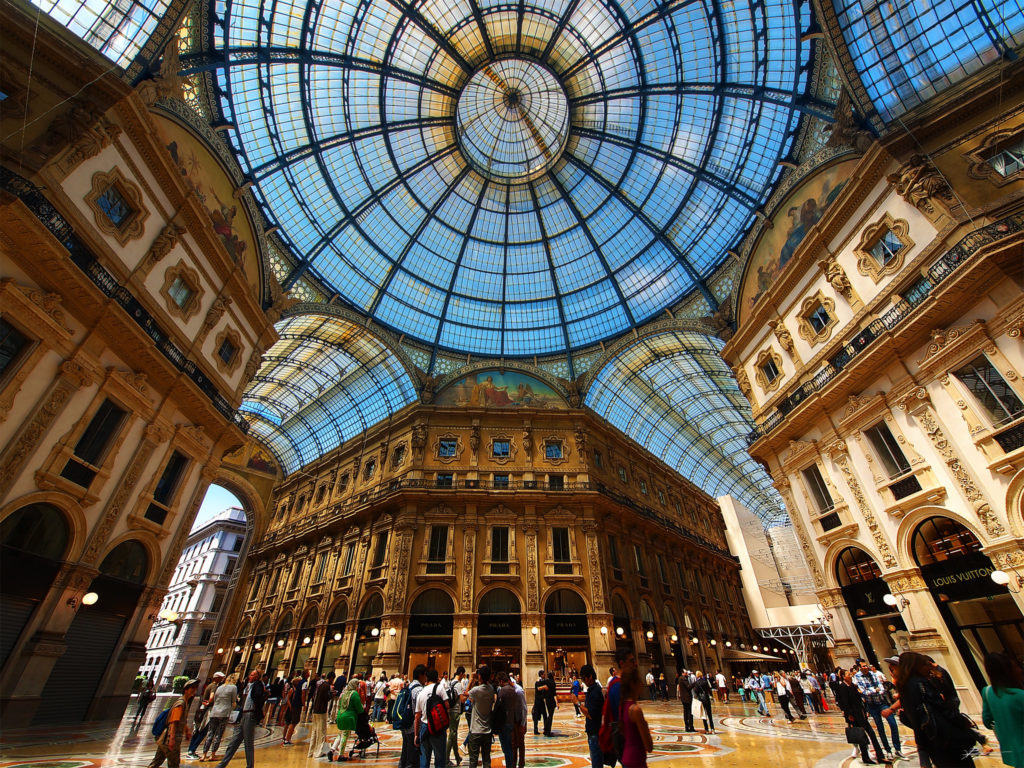
Inside Galleria Vittorio Emanuele II (Photo: paul bica via Flickr / CC BY 2.0)
See 20th-century Italian art at Museo del Novecento
Opened only ten years ago, Museo del Novecento has quickly established itself as one of the leading institutions for Italian art from the 20th century. The display includes around 400 works of art spanning the whole century, introduced by “The Fourth Estate” (Giuseppe Pellizza Da Volpedo, 1902). An immersive neon installation by Lucio Fontana occupies the top floor, while international avantgardes are also featured. The historic Palazzo dell’Arengario (1937) plays a fitting host to the collection, overlooking Piazza Duomo through its neo-Romantic windows.
Piazza del Duomo, 8
Discover a local artisan shop
When it comes to shopping in Milan, high-end fashion brands are not the only unique option. The city’s penchant for originality and innovation also translates to a wide choice of independent shops, of which, here are but a few examples. Yuriko promotes an artistic take on contemporary jewellery, where uniqueness and imperfection are enhanced by prominent designers and carefully-selected materials. Redroom stores up anything from clothing and accessories to art and bijous, bringing together independent artists and artisan brands with an eye for diversity and sustainability (they also run a monthly craft market). Both a shop and a see-through laboratory, ScarletVirgo hosts an eclectic line of bags and backpacks, handmade using only sustainable materials (custom products are also available).
Yuriko – Via della Moscova, 27
Redroom – Via Conte Rosso, 18
ScarletVirgo – Via Voghera, 4/a
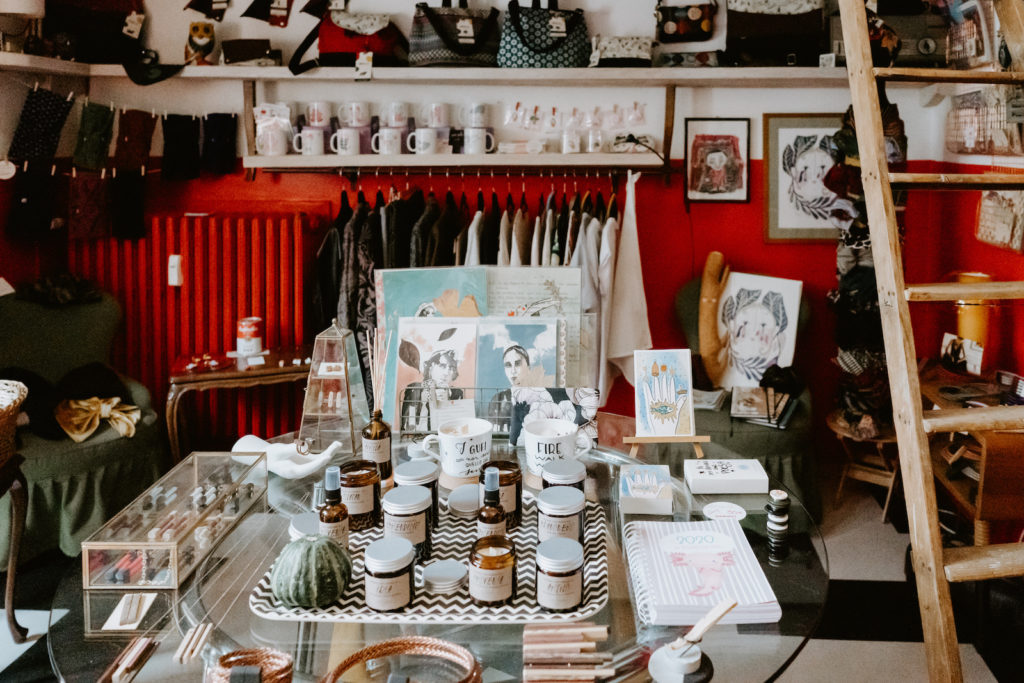
Clothing and accessories at Redroom (Photo: courtesy of Redroom)
Explore the Sforza Castle
Built on a pre-existing fortress starting from 1450, Castello Sforzesco marked the rise to power of the Sforza family in the then Duchy of Milan. As a result of various foreign occupations over the centuries, the Milanese haven’t always looked fondly upon the castle, but have embraced it as one of the symbols of the city in modern times. The majestic architecture blends 15th-century elements with later renovations, while the museums and galleries include work by Leonardo Da Vinci, Michelangelo and Andrea Mantegna. An extraordinary series of tapestries is also among the artistic highlights.
Piazza Castello
Visit one of the city’s Case Museo
Once belonging to prominent figures of Milan, these house-museums offer an unusual peek into the city’s culture and history. Witnessing the changes in society from the 19th century to the present, visitors have the opportunity to explore an extraordinary cabinet of curiosities stepping back into ancient times. Among them, a neo-Renaissance gem, an upper-bourgeoisie villa from the 1930s, and a rich collection of 1900 Italian art can be seen. The four venues are located within close proximity of each other, and both individual and bundle tickets are available.
Museo Poldi Pezzoli – Via Alessandro Manzoni, 12
Museo Bagatti Valsecchi – Via Gesù, 5
VIlla Necchi Campiglio – Via Mozart, 14
Casa Boschi Di Stefano – Via Giorgio Jan, 15
Enjoy opera at Teatro alla Scala
Opera fans visiting Milan shouldn’t miss catching a show at Teatro alla Scala, a world-famous institution dating back nearly 250 years. Built in 1776, the theatre soon became the sounding board for 19th-century composers of Italian melodramma such as Rossini, Bellini and Donizetti. Among them, Giuseppe Verdi is the one who most linked his name to this venue. Today, La Scala hosts opera as well as ballet, symphony concerts, recital and more, while the workshops and museum can be visited for a behind-the-scenes experience.
Via Filodrammatici, 2
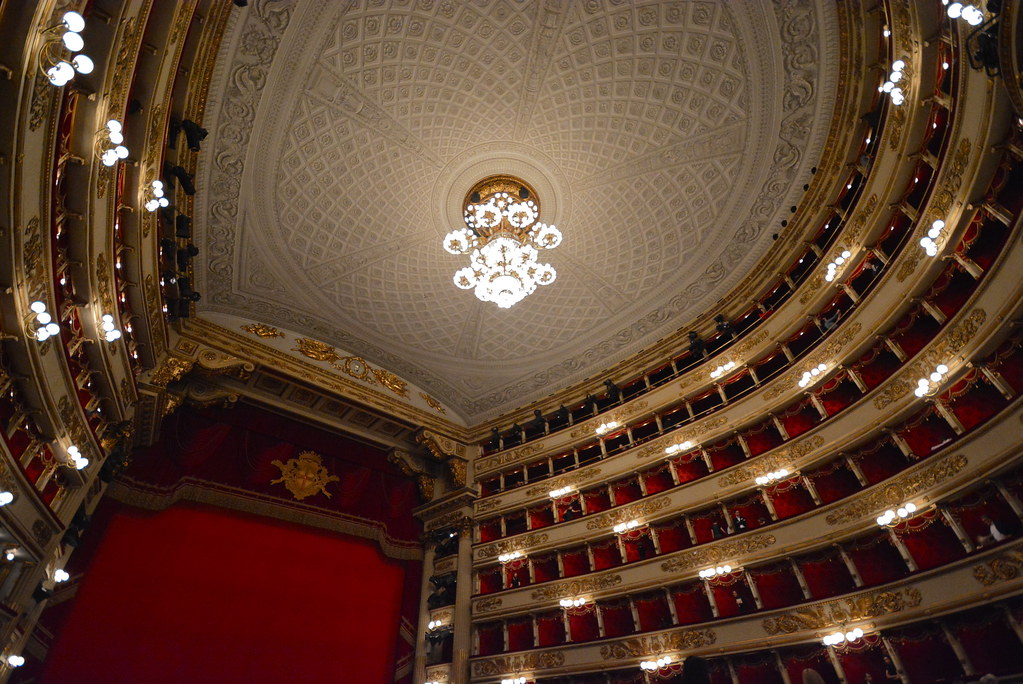
Teatro alla Scala (Photo: Alejandro via Flickr / CC BY 2.0)
See a Leonardo masterpiece
An icon of the Renaissance, Leonardo’s ‘Last Supper’ overlooks the refectory of the Monastery of Santa Maria delle Grazie. It was completed at the end of the 15th century and soon presented major conservation challenges due to environmental factors and the unusual mural technique he used. Little of the original painting remains today, but the latest restoration project has brought back to light much of the details and colours intended by Leonardo. Santa Maria delle Grazie is itself a masterpiece of Renaissance architecture, and the visit includes a 15-century crucifixion fresco by Donato Montorfano.
Piazza di Santa Maria delle Grazie
Reach the top of Torre Branca
This steel tower was a permanent installation at the Fifth Triennial of Decorative Arts, held in Parco Sempione in 1933. Designed by architect Gio Ponti, it soared over 100 metres among the temporary pavilions of the exhibitions, celebrating the encounter between new techniques and modern architecture. Later it stood abandoned for decades, until the Branca Distillery renovated it and opened it to the public in 2002. Visitors will no longer find the restaurant that used to occupy the top of the tower, but the hexagonal belvedere offers unique views over the park, the Duomo and the city’s skyline.
Viale Luigi Camoens, 2
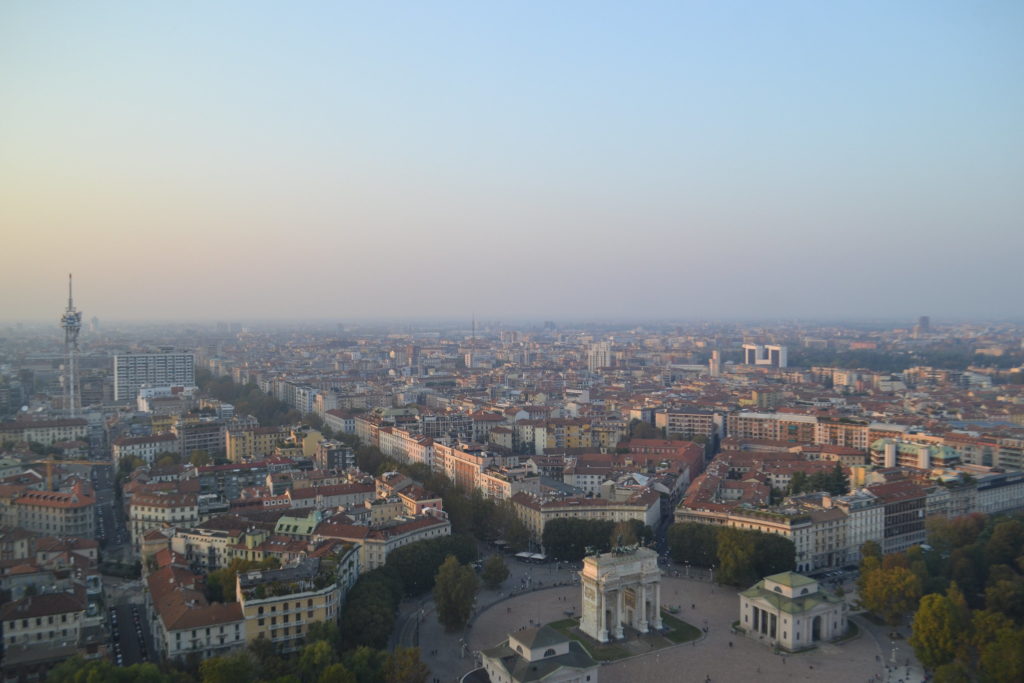
The view from Torre Branca (Photo: Daniel via Flickr / CC BY 2.0)
Sit in a bar designed by Wes Anderson
As well as great contemporary art, Fondazione Prada is home to a hidden gem no Wes Anderson fan should miss. The American director designed the on-site Bar Luce back in 2015, taking inspiration from Neorealist Italian films as well as from the typical atmosphere found in the cafes of bygone Milan. Details such as the vaulted ceilings recall elements of Galleria Vittorio Emanuele II, while the colours and furniture bring visitors back to an Italian bar from the 1950s or 1960s. Yet another reason to visit one of Milan’s most important spaces dedicated to contemporary art and culture.
Largo Isarco, 2
Stroll around the Porta Nuova district
Launched in 2004 and developed over the course of a decade, the Porta Nuova district is one of Milan’s most advanced projects when it comes to urban regeneration. The old neighbourhoods are now glued together by a tree-filled park, called Biblioteca degli Ableri (Tree Library) after the wide variety of vegetation it hosts. The green motif continues up the Bosco Verticale (Vertical Forest), a pair of residential towers lush with over 900 trees. More high-rises define the surrounding skyline, while the raised Gae Aulenti Square is perhaps Milan’s most futuristic shopping spot.
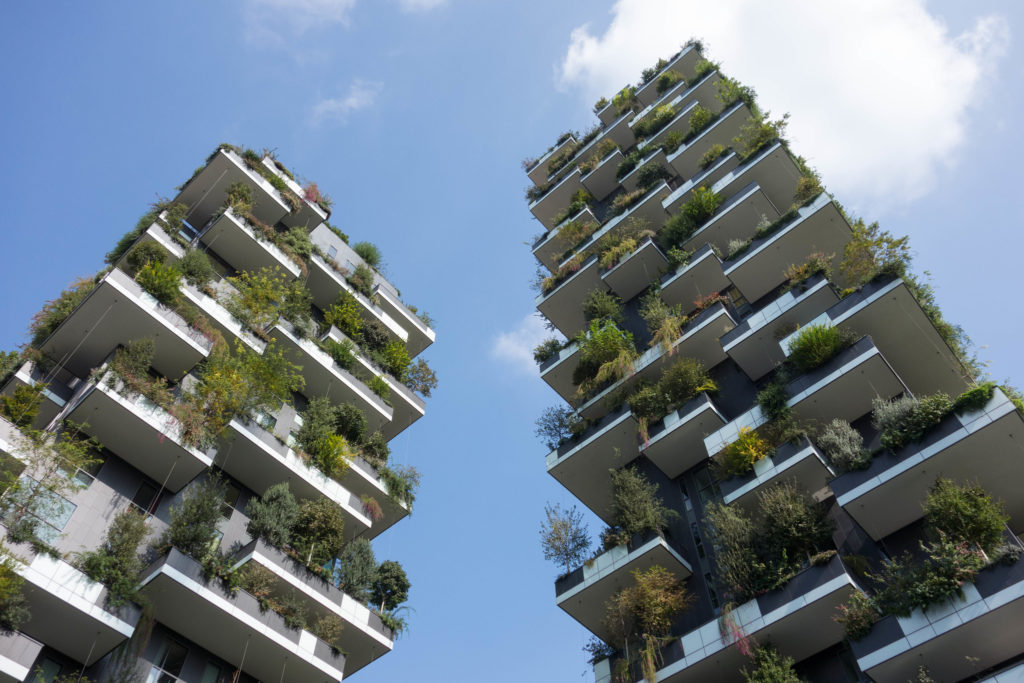
The ‘vertical forest’ designed by the Boeri Studio (Photo: kent wang via Flickr / CC BY 2.0)
Visit Pinacoteca di Brera
One of the finest existing collections of Italian art, Pinacoteca di Brera was founded by Napoleon as Milan became the centre of French-controlled Italian territories. It specialises in Lombard and Venetian art from the 15th and 16th century, although other regions and periods are also well represented. ‘The Kiss’ by Francesco Hayez, ‘Lamentation of Christ’ by Andrea Mantegna and ‘Supper at Emmaus’ by Caravaggio are some of the masterpieces included in the display. In the courtyard, a replica bronze statue by Antonio Canova depicts Napoleon as Mars the Peacemaker.
Via Brera, 26
Try the authentic risotto allo zafferano
Creamy and delicate, saffron risotto is not only a Milan delicacy but also one of the most elegant dishes in all of Italian cuisine. Among the restaurants serving it the proper way, Trattoria Masuelli S. Marco has been run by the same family since opening in 1921, and its risotto features on the menu alongside other Milanese specialities as well as a good wine selection. Osteria Conchetta offers both a traditional and a gourmet menu, the latter listing a tempting variation on the classic risotto. The kitchen at Damm-atrà is uncompromisingly about tradition, dishing out Milanese staples in a no-frills atmosphere next to Naviglio Grande.
Trattoria Masuelli S. Marco – Viale Umbria, 80
Osteria Conchetta – Via Conchetta, 8
Damm-atrà Ristorante Milanese – Via Elia Lombardini, 1
Feast your eyes on Liberty-style architecture
In early 1900, liberty style flourished in Milan thanks to a thriving industrial bourgeoisie. Some private residences dating back to that time are still among the city’s architectural highlights, such as the impressive facade of Casa Galimberti. Human and floral figures appear on richly-coloured ceramic tiles, providing this building with a most distinctive look. Not far from there, Palazzo Castiglioni was the first liberty building in Milan (1903), while two noteworthy Caryatids announce the entrance of Casa Campanini. Also worth a detour are the wrought-iron floral motifs gracing the balconies of Casa Ferrario.
Casa Galimberti – Via Marcello Malpighi, 3
Palazzo Castiglioni – Corso Venezia, 47
Casa Campanini – Via Vincenzo Bellini, 11
Casa Ferrario – Via Spadari, 3
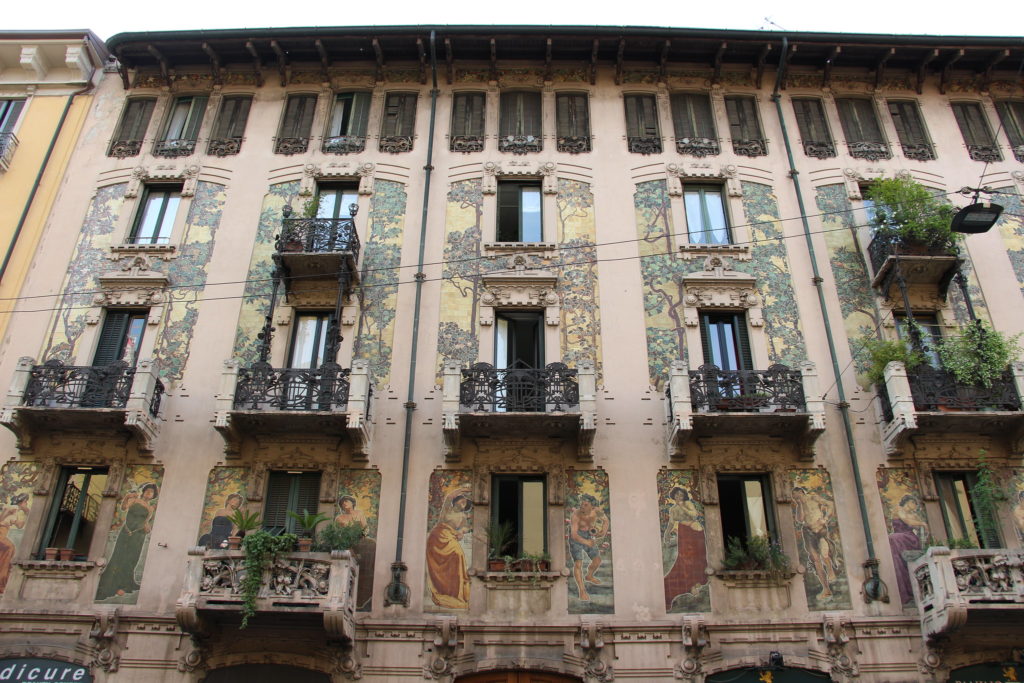
The facade of Casa Galimberti (Photo: fred romero via Flickr / CC BY 2.0)
Seek out the flamingos
Milan has its havens of rest too. One of the most unlikely is the garden of Villa Invernizzi, tucked away in a side street near Corso Venezia. Peeking through the railings (the garden is private), passersby discover a curious flamboyance of flamingos idling around the pond, or sinking their head in it in search of food. They were brought here during the 1980s, and have since populated this leafy garden. The eclectic Casa Berri-Meregalli further up the street is also worth a look, while the historic palaces of Corso Venezia are only a short walk away.
Via Cappuccini, 7
Immerse yourself in the atmosphere of old Milan
Strolling around the centre, one can still catch glimpses of old Milan among modern districts and an ever-changing skyline. Cinque Vie is one of the best spots to find the atmosphere of times gone by, a famous crossroads said to date back to the Romans. Via Santa Maria Podone, via Santa Maria Fulcorina, via Bocchetto, via Del Bollo and via Santa Marta are the streets to look for, whose meeting point forms a distinctive star-shaped layout. Historic palaces and other landmarks punctuate a walk around this area.
Discover Leonardo’s Atlantic Codex at Biblioteca Ambrosiana
The Atlantic Codex is the largest-existing collection of drawings and writings by Leonardo da Vinci. It contains over a thousand sheets filled with notes, projects and memos on a wide range of subjects and disciplines by the Florentine polymath. A rotating selection of these pages is on display at the 17th-century Ambrosiana Library, which has been storing the Codex since 1637. The visit to the library includes the adjoining gallery of the same name, where more works by Leonardo are displayed as well as paintings by the likes of Caravaggio, Raphael and Botticelli.
Piazza Pio XI, 2
Explore a hidden neighbourhood
Some of Milan’s residential neighbourhoods offer good opportunities to venture off the beaten track. Just east from the city centre, Via Abramo Lincoln cuts through an urban ‘village’ dating back to the late 19th century, sometimes known as the Rainbow District. That’s right, the small houses lining this leafy street are brightly and variously coloured, in the same fashion as the famous Venetian island of Burano. More curious still is the Maggiolina district in North Milan. Strolling along Via Lepanto, one might come across a series of igloo-shaped houses, originally meant as temporary dwellings in the aftermath of World War Two. Cute mushroom-shed houses used to be here too, but have been demolished in the 1960s